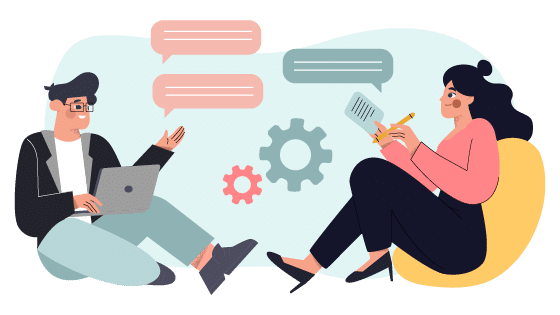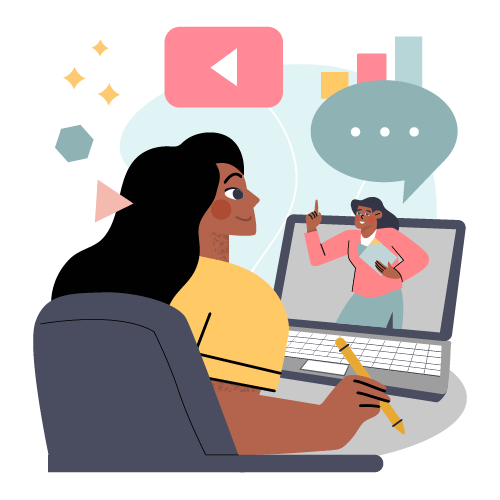The role of talent development in maximizing human capital cannot be overstated. A sharp focus on the growth and development of employees can foster a culture of continuous improvement and innovation.
This article aims to provide a guide on key strategies for successful talent development, from crafting individualized learning journeys to integrating well-being practices.
#1: Craft individualized learning journeys
The era of one-size-fits-all training is long gone. Thanks to advancements in artificial intelligence (AI), assessments can now identify skill gaps and developmental needs with unprecedented accuracy.
These AI-driven assessments serve as the foundation for creating individualized learning paths. By tailoring the learning experience to each employee’s unique needs, organizations can ensure that their workforce is equipped with the skills necessary to drive business success.
AI-driven assessments utilize machine learning algorithms to analyze an employee’s performance, skills, and behavioral traits. These assessments can range from simple quizzes to complex simulations that mimic real-world scenarios. The data collected is then analyzed to identify areas where the employee excels and where improvement is needed.
Leveraging AI-driven assessments to craft individualized learning journeys means that organizations can create a more efficient, engaging, and adaptable talent development strategy.
#2: Develop mentorship programs
Mentorship is not just about the transfer of knowledge from a seasoned professional to a newcomer; it’s a two-way street that fosters reciprocal learning. Pairing experienced mentors with eager learners can result in a symbiotic relationship that benefits both parties. This collaborative approach to learning is a cornerstone of effective talent development.
The benefits of mentorship programs are manifold:
- Skill enhancement: Mentees can quickly acquire new skills from their mentors, accelerating their professional growth.
- Networking: Both mentors and mentees expand their professional networks, opening doors to new opportunities.
- Job satisfaction: Mentorship often leads to increased job satisfaction, as employees feel more engaged and valued.
- Leadership development: Mentors get to hone their leadership skills, while mentees are groomed for future leadership roles.
- Innovation: The exchange of ideas between mentors and mentees can spark innovation and problem-solving.
Mentorship programs offer a multitude of benefits that contribute to the holistic development of both mentors and mentees, making it an indispensable strategy in talent development.
#3: Establish a culture of continuous learning
Real-time feedback cycles, supported by AI-driven tools, are revolutionizing the way organizations approach employee development.
Continuous feedback allows for immediate course correction, enabling employees to adapt and improve in real time. This agile approach to development not only enhances performance but also fosters a culture of continuous learning, making it easier for employees to reach their full potential.
AI-driven tools can collect data from multiple sources, such as performance metrics, peer reviews, and self-assessments. This data is then analyzed in real-time to provide actionable insights that can be immediately implemented.
The integration of AI-driven tools and real-time feedback cycles creates an environment where continuous improvement is not just encouraged but ingrained into the organizational culture.
#4: Provide easily accessible microlearning modules
Microlearning is an educational strategy that focuses on delivering content in small, specific bursts. This approach is particularly effective for skill enhancement, as it allows employees to integrate learning into their daily routines without overwhelming them.
Microlearning modules can provide just-in-time training that is both effective and convenient. A microlearning module can be a short video, an interactive quiz, a quick-read article, or even a podcast episode. The key is to keep it concise and focused on a specific topic or skill.
Microlearning offers a flexible, accessible, and effective way to enhance specific skills, making it an invaluable tool in modern talent development strategies.
#5: Encourage calculated risk-taking
Innovation often stems from stepping out of one’s comfort zone. Embracing failure as a catalyst for growth and innovation is crucial for talent development. Encouraging calculated risk-taking can lead to breakthroughs that benefit not just the individual employee but the organization as a whole. Some examples include the following:
- Piloting a new project can lead to discovering a new revenue stream or solving a long-standing issue.
- Adopting a new technology is often translated into increased efficiency and staying ahead of competitors.
- Cross-departmental collaboration is the crucial step for enhanced teamwork and innovative solutions from diverse perspectives.
- Remote work models increase employee satisfaction and potentially lead to cost savings.
- Investing in employee training is a strategic move towards skill enhancement, leading to a more competent workforce.
Ultimately, calculated risk-taking is not just about embracing failure; it’s about seizing opportunities for growth and innovation that can propel both the individual and the organization forward.
#6: Integrate well-being practices
Holistic employee development goes beyond skill acquisition; it also encompasses physical, mental, and emotional well-being. Organizations can integrate well-being practices into their talent development initiatives:
- Mindfulness sessions: Guided mindfulness exercises to help employees manage stress and improve focus
- Fitness programs: On-site or virtual fitness classes to promote physical health
- Mental health resources: Providing access to counselors or mental health apps for emotional well-being
- Work scheduling: Using tools like employee scheduler software that help manage work schedules, ensuring a work-life balance and reducing burnout
- Nutritional guidance: Offering dietary advice or healthy snacks to improve overall health
By integrating these well-being practices into talent development initiatives, organizations can create a more holistic approach to employee growth, leading to a healthier, happier, and more productive workforce.
The Final Word: Talent Development’s Transformative Impact
Talent development is a multifaceted endeavor that requires a strategic approach. Combining various strategies like tailored learning paths, agile skill cultivation, comprehensive mentorship, and well-being practices can create a workforce poised for success.
In an age where human capital is the most valuable asset, innovative talent development strategies are not just a competitive advantage; they are essential for business success.






